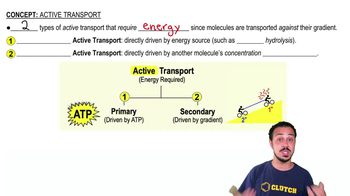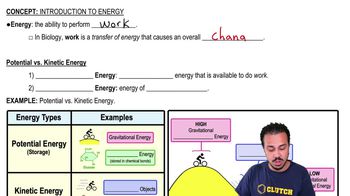Which of the following is false about fimbriae?
a. They are composed of protein.
b. They may be used for attachment.
c. They are found on gram-negative cells.
d. They are composed of pilin.
e. They may be used for motility.
 Tortora 14th Edition
Tortora 14th Edition Ch. 4 - Functional Anatomy of Prokaryotic and Eukaryotic Cells
Ch. 4 - Functional Anatomy of Prokaryotic and Eukaryotic Cells Problem 4.8a
Problem 4.8a Verified step by step guidance
Verified step by step guidance



Which of the following is false about fimbriae?
a. They are composed of protein.
b. They may be used for attachment.
c. They are found on gram-negative cells.
d. They are composed of pilin.
e. They may be used for motility.
Answer the following questions using the diagrams provided, which represent cross sections of bacterial cell walls.
a. Which diagram represents a gram-positive bacterium? How can you tell? <IMAGE>
b. Explain how the Gram stain works to distinguish these two types of cell walls.
c. Why does penicillin have no effect on most gram-negative cells?
d. How do essential molecules enter cells through each wall?
e. Which cell wall is toxic to humans?
Which of the following pairs is mismatched?
a. glycocalyx—adherence
b. pili—reproduction
c. cell wall—toxin
d. cell wall—protection
e. plasma membrane—transport
Which of the following pairs is mismatched?
a. metachromatic granules—stored phosphates
b. polysaccharide granules—stored starch
c. lipid inclusions—poly-β-hydroxybutyric acid
d. sulfur granules—energy reserve
e. ribosomes—protein storage
You have isolated a motile, gram-positive cell with no visible nucleus. You can assume this cell has
a. ribosomes.
b. mitochondria.
c. an endoplasmic reticulum.
d. a Golgi complex.
e. all of the above
Match the characteristics of eukaryotic cells in column A with their functions in column B.
<IMAGE>